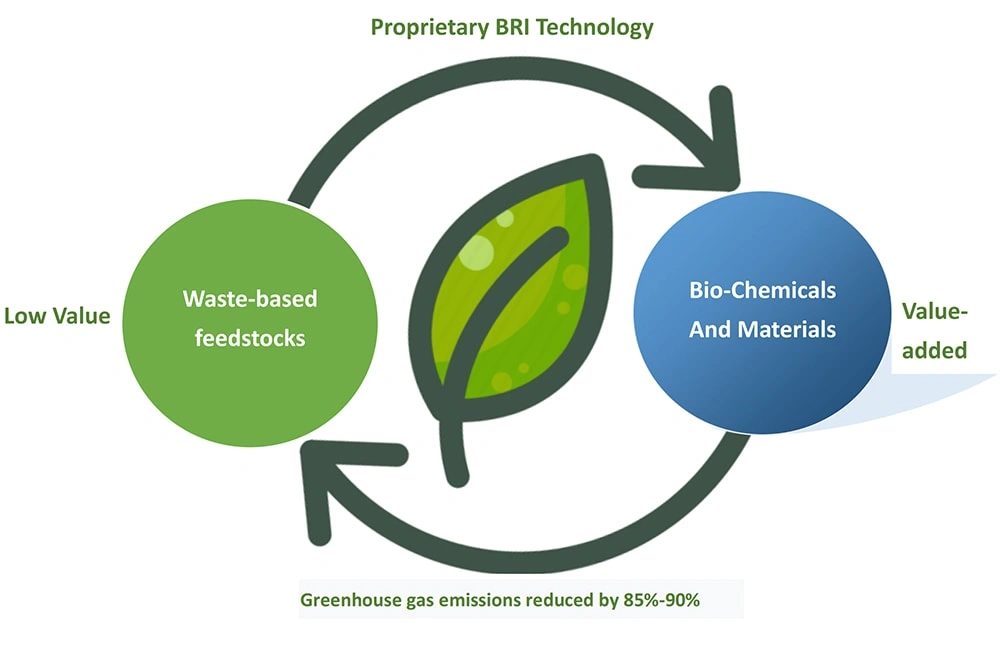Biomass refinery integrated technology - Convert low-value feedstocks into high-value sustainable chemicals and degradable materials .

This new technology innovatively uses new biological solvents to carry out selective physical dissolution and separation operations on biomass raw materials. In this process, key components such as lignin, hemicellulose, and cellulose, which are easy to be utilized for high-value applications, can be efficiently extracted. Based on these components, a series of high-value-added products are produced, covering biomass aviation kerosene, surfactants, functional sugars, and degradable materials, among others.
The separation process of the main three components of lignocellulose contributes to the efficient utilization of biomass.
In the entire production process, both the solvents and water can be recycled, maintaining the comprehensive energy consumption at a relatively low level, and achieving zero waste discharge. At the same time, the three components of lignin, hemicellulose, and cellulose obtained through separation and extraction not only have high yields and purities but also stable and reliable qualities. Among them, the cellulose part can be used for the production of pulp, dissolving pulp, nanocellulose, fuel ethanol, and so on. The hemicellulose part can be used not only for the production of furfural but also for the preparation of xylose and L-arabinose. Lignin can be used for the manufacturing of dye dispersants, road asphalt emulsifiers, bio-aviation kerosene, and woody aroma resins. The application fields of the products extracted through this technology are extremely extensive, extending to many cutting-edge fields such as batteries and energy storage devices, biomedicine, aerospace, and microelectronics.

This technology uses agricultural crop stalks as raw materials, and it is also applicable to non-forestry plants such as bamboo, shrubs, reeds, and even weeds. In practical applications, the yield of cellulose pulp can reach more than 45%, the recovery rate of pulping chemicals exceeds 99%, and the comprehensive utilization rate of the high-value components of cellulose, hemicellulose, and lignin in the raw materials is greater than 85%. The use of biopolymers can reduce the life cycle greenhouse gas (GHG) emissions by more than 90%. Taking a single cooperative factory located in Dorbod as an example, its annual carbon emission reduction is approximately 132,500 tons.

Deep within the cell walls of every plant, there is a powerful substance, which provides the second largest source of renewable carbon on Earth. As a renewable material, we believe that lignin will eventually replace fossil materials and completely transform the way we use natural resources to produce products.

In the treasure trove of natural substances, cellulose holds a unique and crucial position. At the microscopic level, cellulose is a large-molecule polysaccharide formed by the linkage of glucose molecules. It has a "aloof" nature, being insoluble in water and not readily interacting with common organic solvents.

Hemicellulose, as a kind of biopolymer, is a mixture of highly branched low-molecular-weight homopolymers and heteropolymers. It is widely distributed in plants, accounting for about 15% - 20% in coniferous wood, and 15% - 35% in broad-leaved wood and gramineous grasses. It coexists with cellulose in the plant cell wall.